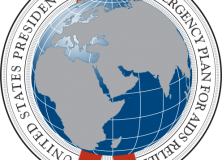HIV/AIDS Mitigation Efforts in Africa and U.S. National Security Policy: An Analysis of the President’s Emergency Plan for AIDS Relief (PEPFAR) — Devin J. Lynch

INTRODUCTION:
More than 39 million people are now estimated to be living with HIV/AIDS worldwide. Sub-Saharan African has been most severely affected, with 68 percent of the world’s HIV-positive population now living in the region. The national security implications of HIV/AIDS have been recognized for nearly a decade. In July 2000, the United Nations Security Council passed Resolution 1308, which declared that action was necessary before the AIDS pandemic could further threaten world stability. Shortly thereafter, President Bill Clinton announced that AIDS would be treated as a threat to U.S. national security. The 2000 U.S. National Intelligence Estimate (NIE) determined that infectious diseases, including HIV/AIDS, “exacerbate social and political instability in key countries and regions in which the U.S. has significant interests.” The first large-scale U.S. government response to the HIV/AIDs threat was the President’s Emergency Plan for AIDS Relief (PEPFAR), created by President George W. Bush in 2003. Through this program, the United States directed $15 billion over five years to combat HIV/AIDS, tuberculosis, and malaria. To date, PEPFAR has financed testing for over 33 million people and supported the care of more than 6.6 million people infected or affected by HIV/AIDS, including 2.7 million orphans and vulnerable children.
STRATEGY:
The strategic and operational approach of PEPFAR is systematically prepared by the Office of the U.S. Global AIDS Coordinator (OGAC), in collaboration with the U.S. Departments of State, Defense, Commerce, Labor, Health and Human Services (in particular the Centers for Disease Control and Prevention; the Food and Drug Administration; and the National Institutes of Health), the Agency for International Development, and the Peace Corps. With a comprehensive five-year strategy, PEPFAR has evolved as new partners have been incorporated into the fight against AIDS and as innovations, input, experience, and outcomes have been measured and evaluated. Through PEPFAR, the U.S. government is working with international, national, and local leaders worldwide to support integrated prevention, treatment, and care programs. These three categories are the focus of PEPFAR’s efforts. As a work in progress, PEPFAR’s over-arching strategy tries to remain flexible and responsive to the varied nature of the HIV/AIDS pandemic. However, the policy process in Washington, including the budget process, is such that this sought-after pliancy is limited.
INTEGRATED ELEMENTS OF NATIONAL POWER:
The PEPFAR strategy was to identify the existing capacity of the implementing agencies and harness and expand their comparative strengths into one synergistic U.S. government response coordinated by OGAC. The OGAC has worked to develop a number of mechanisms for communicating not only across agencies, but also between Country Teams and central staff. However, many opportunities for improving the comprehensiveness and effectiveness of services through better integration and coordination remain. In particular, current efforts to make budgeting, planning, and reporting mechanisms responsive to the congressional budget process actively work against integration.
EVALUATION:
PEPFAR’s strength is rooted in its lead-agency approach, clear interagency decision mechanisms, bipartisan political support, and immense resources. By centralizing the direction, creation, coordination, and implementation efforts of U.S. HIV/AIDS policy in the OGAC, the many U.S. government policies and programs which combat HIV/AIDS have been focused and synthesized. The lead-agency approach also allows OGAC to be the point for criticism, adjustments, and recommendations to U.S. HIV/AIDS policy. This focus allows for increased government efficiency and unifies the policy making process. However, the program does have some weaknesses caused by its wide scope, complex task, budgetary restrictions, and a few politically-charged policies.
RESULTS:
As a result of PEPFAR’s efforts, billions of dollars have been directed towards the care, prevention, and treatment of HIV/AIDS; millions of HIV/AIDS patients have been treated; global resources have been mobilized; international AIDS-combating efforts have been synthesized; HIV/AIDS stigma has been lessened; gender inequalities have improved slightly in the most-affected areas; democratic and political gains in the 15 focus countries have seen some success; and America’s diplomatic reputation—especially in Africa—has increased significantly.
CONCLUSION:
The expansion of the traditional definitions of security to include health threats requires increased interagency cooperation, as the skills of the Departments of State and Defense alone cannot succeed in confronting health challenges. Overall, under the OGAC, PEPFAR’s participating agencies have worked well together. While difficulties remain, the strategy and policies of the program remain uniform and each agency’s role is fairly well-defined.